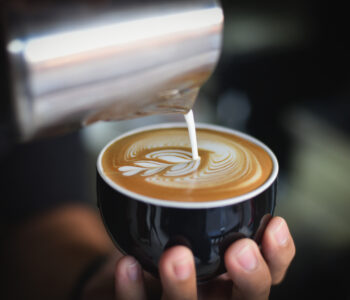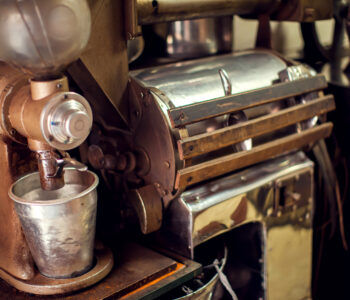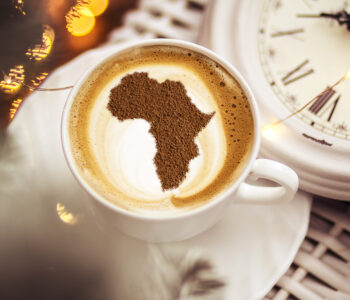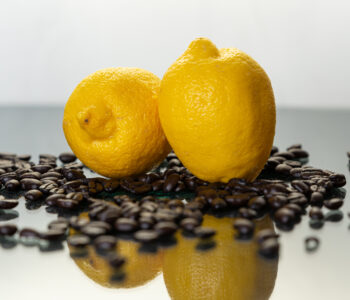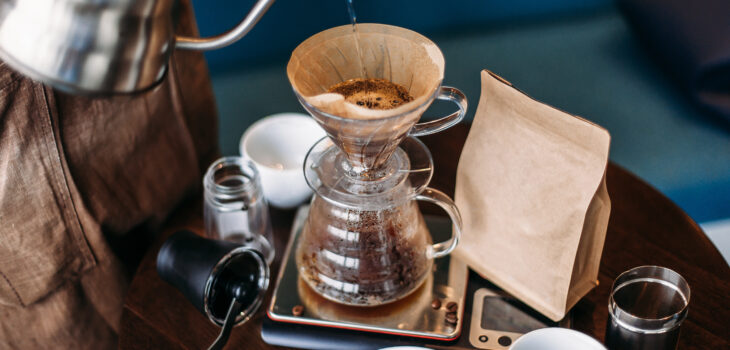 coffee knowledge
coffee knowledge
Dark roast pour over with the Hario V60
You might think that there’s nothing special about the combination of Hario V60 and dark-roasted coffee. Well, to be honest, it’s not the combination itself that leads to this article. It is rather the fact that the coffee world is divided on this. Some love dark-roasted filter coffee with all its flavourful facets, others are rather averse to it. The majority of hand filter fans use lightly or medium roasted coffee for this type of preparation. But why?
To find out, I got myself both light and dark roasted coffee and have been experimenting with it for the last few weeks. You can now take a look at my findings. By the way: My personal recipe for Dark Roast Coffee is waiting for you at the end of this article.
Dark vs. light roasted coffee. What is the difference?
The most obvious difference is the colour that can provide first informations about other interesting things. Which brings us to the first point. Light roasted coffee contains more acidity and offers more complex flavours. Dark beans, on the other hand, are characterised by flavours ranging from nutty to dark chocolate or even smoky. Why is that?
You have to understand the roasting process and what happens inside the bean. In simple terms, roasting first removes the residual moisture from the coffee and then imparts the desired flavour thanks to the so-called Maillard reaction. which, by the way, is also responsible for our toast turning brown in the morning and thus tasting better. The further the roasting process progresses, the darker the beans become and thus the coffee loses a lot of its naturally contained acidity. Now the flavours already mentioned above, such as dark chocolate, emerge.
The second big difference is the density of the cell structure. Sounds complicated? But basically it is not. What happens here is that the bean becomes more permeable to water as the degree of roasting gets darker and darker. This means that ground, dark-roasted coffee releases its ingredients more easily into the water than lighter roasts. This is where we find the third difference: the grind. Light roasts require a much finer grind than dark coffees. So now that we talked about almost everything leLast but not least, the water temperature also plays a decisive role.
I will explain how all this is connected and the differences in terms of extraction, grind, taste, coffee quantity and water temperature in the following.
Coffee brewing with the Hario V60 Hand Filter
Now we come to the practical part of the whole thing. No matter how you prepare your coffee, the process is basically the same. The aim is to achieve a combination of hot water and the ground beans. In this way, you dissolve the ingredients that make coffee delicious. As mentioned above, the cell structure of the beans is broken down more and more the further the roasting process progresses or the darker the roast is. It is not advisable to simply pour dark coffee into the grinder without adjusting the grind to the light roast. I tried the whole thing myself on my grinder at home. While the light coffee with its fine fruity acidity was very pleasant to drink, the bitterness of the dark beans increased immeasurably. The coffee was clearly over-extracted.
What does “over-extraction” mean?
A bean consists of 30% soluble substances, such as proteins, caffeine, fats, carbohydrates, etc. Ideally only between
18 – 22% of this should be extracted. Anything more than that is called over-extraction and the coffee tastes bitter. In the following, I will explain how I use the interplay of grind, coffee quantity and water temperature to achieve a good result and avoid over-extraction. The dark roasted and ground beans release all the soluble substances (also called TDS = Total Desolved Solids) more easily into the hot water. So we have to grind the beans a bit coarser so that not too many of the bitter substances end up in our cup. Of course, these bitter substances can be intentional to a certain extent. But if the coffee is very bitter, tastes flat and leaves a dry feeling on the tongue, then it is too much of a good thing.
If you only change the grind now, you will notice that the coffee runs through your filter much faster and tastes very flat and watery. In other words the bitterness may be gone, but it’s still not a real tasty experience because the strength also leaves a lot to be desired. For this reason, I recommend increasing the dose. Normally I brew light roasted coffee with 20g for 300g water (brew ratio 1:15). In this case, however, I use 25g for the same amount of water, which corresponds to a ratio of 1:12. This offers the water more resistance, it stays in contact with the coffee a little longer and can thus release more aroma and also caffeine. It is important to find the balance between the amount of coffee and the grind.
As a rule of thumb for the Hario V60, you can remember the following:
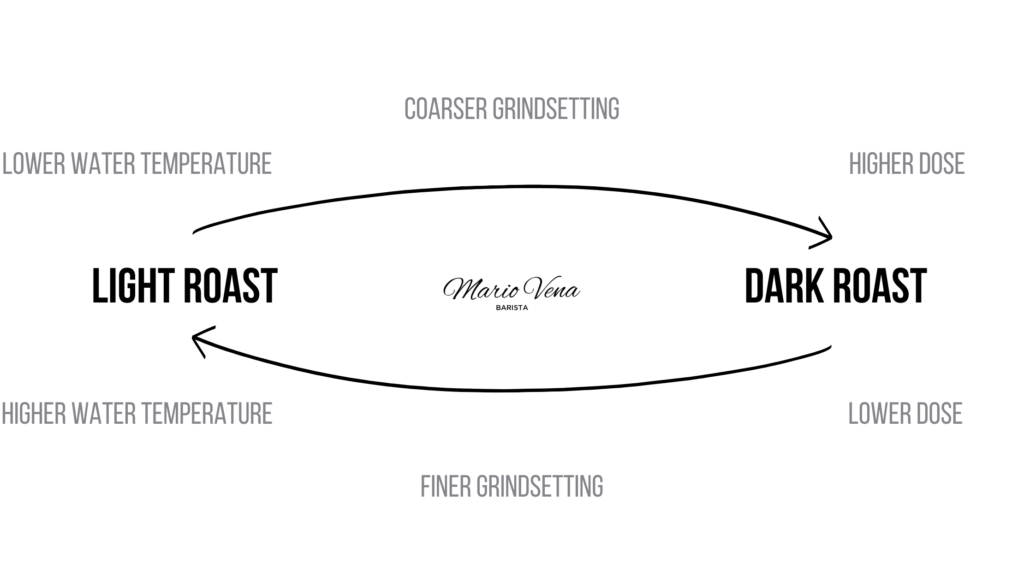
The right temperature is crucial!
Not only the grind and the amount of coffee are important variables, but also the water temperature. Basically, the higher the temperature, the higher the energy with which the water “processes” the coffee. At this point, at the latest, it becomes clear that there is no one decisive variable, but rather that a balance must be struck between all three. For the water temperature, 80°C to 85°C is a good starting point. It doesn’t sound like much at first, but you will notice how big the differences are in this case if you only deviate by a few degrees. To be honest, I have to admit that at the beginning of my “V60 career”, I brewed each of my purchased coffees with 90°C water.
This may work well with light and medium roasts, but with dark roasts I have practically always run into over-extraction. Be brave and try out different temperatures and take notes. If you experiment a lot, you won’t be able to remember everything. With time you will get a feeling for it. And while we are on the subject of water, always use filtered water. You will notice the difference.
My favourite V60 recipe for you to try
Preparation
First of all, you need a scale and a timer. I fill my kettle with filtered water and set it to 80°C. Then I grind the coffee a little coarser than I would for light roasts. Then I grind the coffee a little coarser than I would for light roasts. A photo at this point is not very helpful, because even dark coffees still differ in the degree of grinding. This is due to the different altitudes, for example. Now rinse your filter with hot water, both to warm up the V60 and to wash out any residual taste from the paper. Then put the freshly ground coffee into the filter and make a small depression in the centre of the coffee bed. Start the timer.
The bloom phase
For the bloom phase, I only use 50g of water (amount of coffee x 2). A little tip here: The less water you use for the bloom, the more acid you can get out of the coffee in the initial phase. I use this fact to create a counterbalance for the bitterness. Now let the coffee bloom until the clock shows 0:30 minutes. You will notice that the combination of water and coffee has a completely different consistency than with light beans. Do not stir. This would unnecessarily increase the extraction at this point. We want to prevent over-extraction.
Final step
Have you reached half a minute? Good, now pour the remaining 250g of water into the V60 in slow, circular movements. Make sure that this process takes about 30 seconds. And now comes a very important part of the whole thing! As the water level in the filter gets lower and lower, you can see that some coffee sticks to the edge. That’s why you now swivel about every fifteen seconds to bring the coffee back to the centre, where it is covered by the water. This way, all the coffee is extracted evenly. Keep doing this until the coffee is ready. The whole process should not take longer than 2 minutes and then your well-balanced and tasty Dark Roast in the Hario V60 is ready.
My personal conclusion:
After a lot of back and forth trying, I was able to develop a recipe that gives good results. It’s not that I don’t like the coffee then. However, I have to say that after numerous experiments I also count myself in the “light roast” category, because I simply prefer light and floral notes. At least in the Hario V60 hand filter.
Have you ever wondered where coffee actually comes from? The origin of coffee will tell you.
As always, I look forward to your comments, suggestions and questions about coffee.
